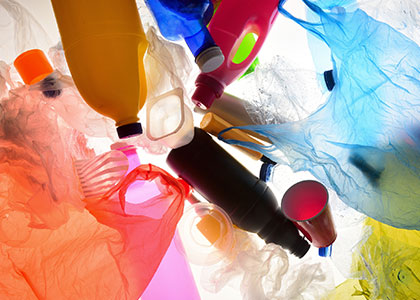
Trending Away from Throwaway Culture
By Suzanne Boothby
Have you ever stopped to think about where your hummus container ends up when you are done with it? What about the straw in your juice cup?
The average American creates almost 4.5 pounds of waste every day. Together, we make enough waste to fill 63,000 garbage trucks a day.
Protecting the planet as part of a wellness routine was named one of the top wellness trends for 2018. Many people are shopping smarter and paying more attention to how their food choices impact the planet.
Even a healthy person eating plant-based foods can still create a ton of waste. In the morning, you might open a box of granola and pour in some almond milk. Lunch might include a bag of carrots and hummus or a salad in a plastic container. Maybe you grab a water bottle somewhere in the day to stay hydrated.
While some of these items may get recycled, a lot of grab-and-go plastic food and beverage containers end up in landfills. The theme for Earth Day 2018 is to end plastic pollution. Research shows that Americans threw away more than 33 million tons of plastic in 2014 and only about 9.5 percent of it was recycled.
Plastic pollution is a global issue. This durable material is designed to last a long time, and scientists estimate that it takes hundreds of years for most plastics to decompose. Now, consider all the single-use plastics you use in your life, meaning something you use once and then throw away, including cups, straws, containers, bags and more.
Making Less Trash
Zero-waste living, or striving not to produce any unnecessary trash, is an aspiration that more wellness professionals are recommending and trying out. The idea is to send nothing to the landfill. The #zerowaste hashtag has close to one million posts on social media, as more people take on the challenge.
The idea of creating no waste can be intimidating at first. So rather than striving for perfection, instead think about how you can make better choices each day.
One place to start is simply by getting clear about what kind of waste you are generating. The Earth Day Network created this simple plastic pollution calculator for you to get a better picture.
Once you are clear about what you are consuming, you may begin to buy less and only buy what you need. You may also be able to reuse more of the containers you already have and opt for reusable items when you can.
Some simple switches you could try:
- Get a reusable water bottle.
- Swap your paper towels for cloth towels.
- Bring a reusable coffee cup to the coffee shop with you.
- When you order a juice at a juice bar, skip the straw.
- Make your own hummus.
- Buy vegetables in bulk and forego plastic bags when you can (or bring your own cloth bags).
For more inspiration and tips, check out zero-waste pioneers such as Bea Johnson, Lauren Singer, and Kathryn Kellog, among many others, who offer honest details about how to reduce waste and enjoy a healthy lifestyle.
If you are passionate about your own personal wellness, why not step up your commitment to the planet as well?